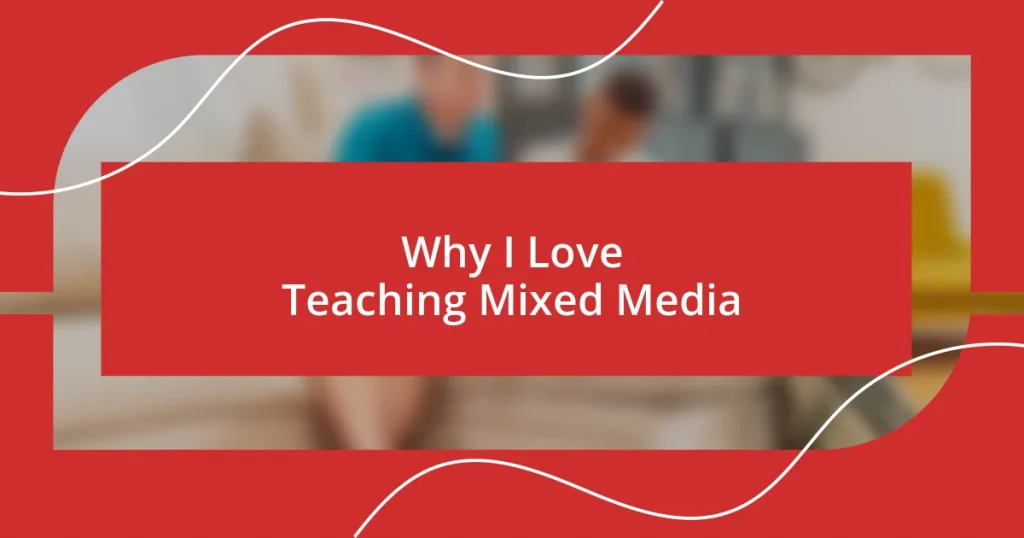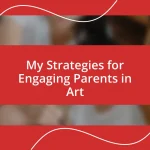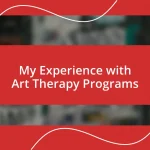Key takeaways:
- Mixed media art fosters self-expression and experimentation, allowing students to embrace creativity beyond traditional techniques.
- Collaboration and personal connection are enhanced through group projects and the incorporation of cultural narratives in artwork.
- Overcoming challenges such as intimidation and material overload can spark creativity, as students learn to focus and manage their time effectively.
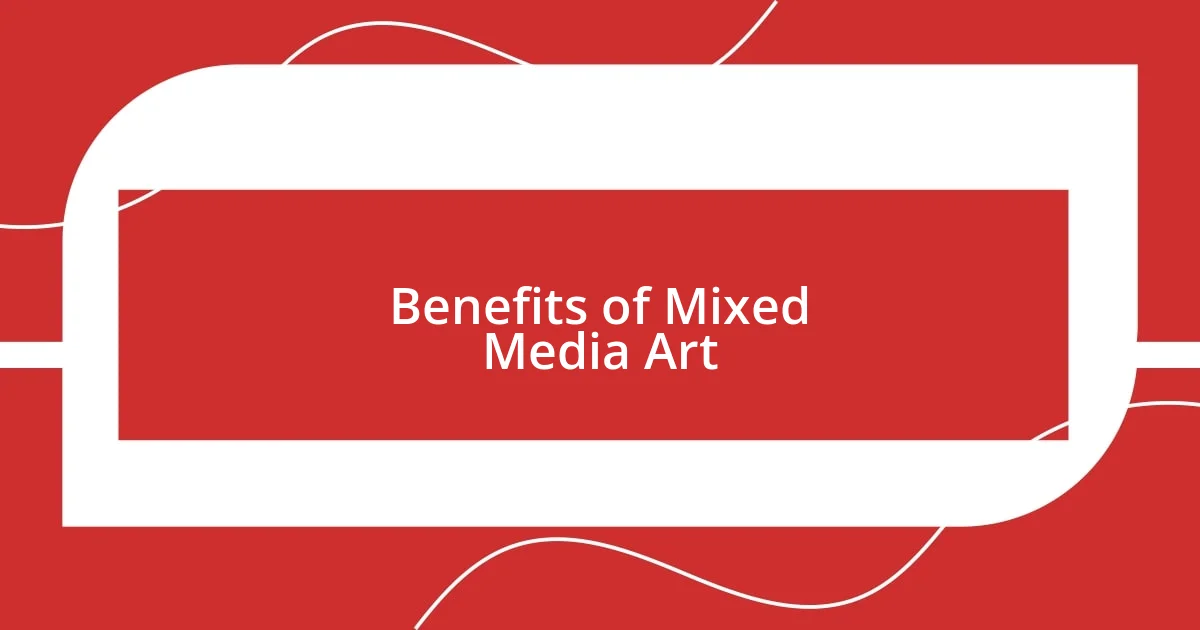
Benefits of Mixed Media Art
One of the most captivating benefits of mixed media art is the freedom it provides for self-expression. I remember a student who struggled with traditional painting; they felt confined by the rules of realism. But when I introduced them to mixed media, their eyes lit up! They could combine paint with fabric and found objects, telling their story in a way that felt authentic to them. Isn’t it amazing how breaking the rules can sometimes lead to the most profound revelations?
Another significant advantage is the endless possibility for experimentation and exploration. I often encourage my students to play without worrying about the end result. I once tried using old magazines, gluing the pages randomly onto a canvas, then painting over them. The surprise of what emerged from that chaotic process still makes me smile. How often do we allow ourselves to embrace such uncertainty in life? In mixed media, we learn that the journey is just as important as the destination.
Mixed media art also fosters resilience and adaptability. I’ve seen students face failures—pieces that didn’t turn out as they had envisioned. Yet, they learned to see these ‘mistakes’ as opportunities for growth. One student turned a muddled background into a beautiful layer by adding a new element—a simple yet profound lesson in perseverance. Don’t you think this skill is invaluable not only in art but in life as well?
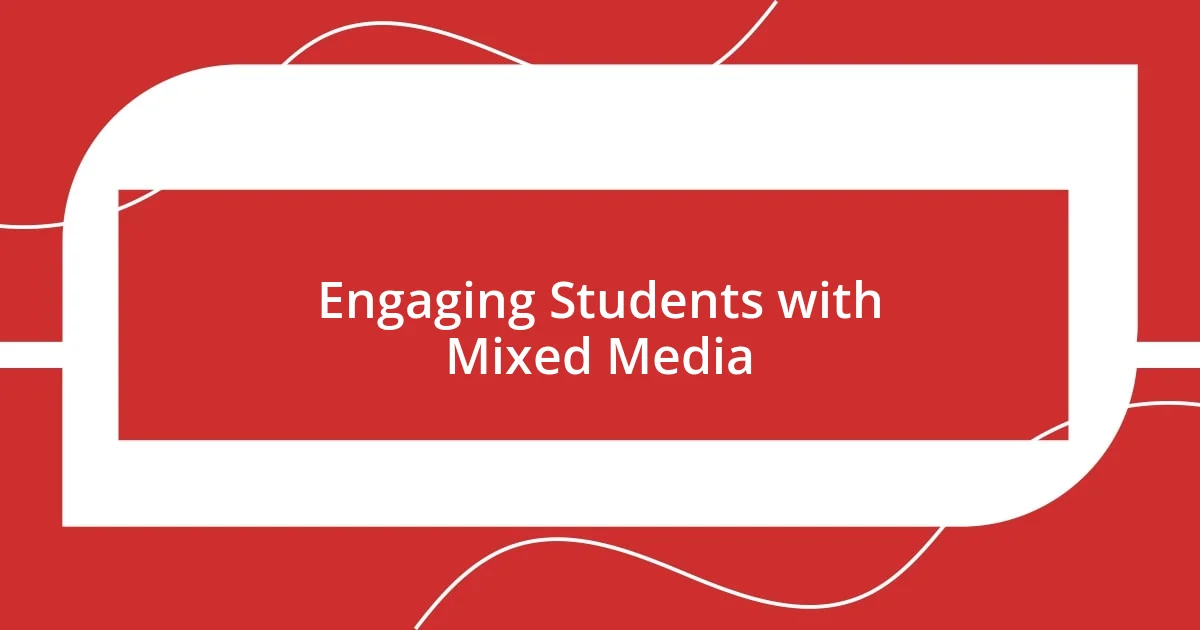
Engaging Students with Mixed Media
Engaging students with mixed media can transform the classroom from a place of static learning to a vibrant studio of creativity. I vividly recall a project where students had the freedom to choose their materials. One student combined acrylic paint with natural elements like leaves and twigs. Watching them excitedly demonstrate how to create textures with these materials was enlightening. They not only learned about art but also about nature, sparking rich discussions about their choices.
Another intriguing aspect is the collaborative spirit that mixed media can foster. Group projects often lead to discussions that draw on each student’s unique perspective. I remember a time when students were tasked to create a community mural using various materials. The energy in the room was infectious; ideas flowed, and friendships formed as they worked side by side, sharing not just materials but creative strategies. Isn’t it fascinating how mixed media encourages teamwork and communication?
Lastly, mixed media facilitates a deeper engagement with subject matter beyond the art itself. I once used historical context to inspire a project, allowing students to create pieces representing different cultures. One student chose to convey their heritage through textile scraps and paint, telling a story that connected them to their roots. It was more than art for them; it was a personal journey. How often do we get to weave information with personal stories in such a creative manner?
| Engagement Aspect | Description |
|---|---|
| Creative Freedom | Mixing various materials allows students to express themselves authentically. |
| Collaboration | Group projects foster teamwork and communication among students. |
| Personal Connection | Students can connect their artwork to personal or cultural stories, deepening their engagement. |
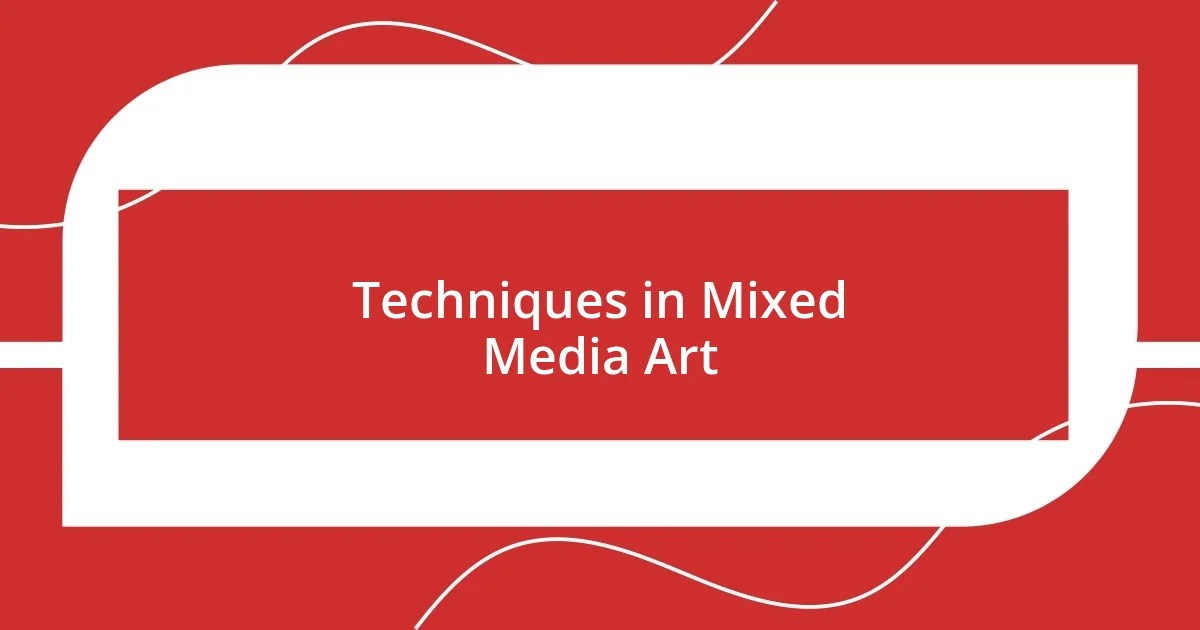
Techniques in Mixed Media Art
Mixed media art allows artists to blend various techniques, resulting in unique creations that facilitate self-expression. I find it fascinating how methods like collage and layering can transform a simple concept into something mesmerizing. Once, during a workshop, a student began with a watercolor wash and then added newspaper clippings over it. The layered textures created depth, making the artwork visually captivating while also telling a rich narrative. That was a moment where the magic of combining techniques unfolded beautifully right before my eyes.
When exploring techniques in mixed media, some key approaches stand out:
- Collage: Combining diverse materials like paper, fabric, and found objects for visual storytelling.
- Layering: Building depth by applying multiple layers of paint or other mediums, creating a dynamic visual effect.
- Texturing: Utilizing different materials, such as sand or fabric, to enhance tactile qualities and dimension.
- Stenciling: Employing templates to create specific shapes or patterns for a structured yet creative look.
- Ink Transfer: Transferring images from paper onto a mixed media surface for intriguing effects.
These techniques invite experimentation, transforming an ordinary piece into a canvas of endless possibilities. I enjoy seeing my students connect with these methods, each finding their own rhythm in the art-making process. It’s all about discovering what ignites their passion—whether it’s the freedom of collage or character in texture. Isn’t that what art is all about?
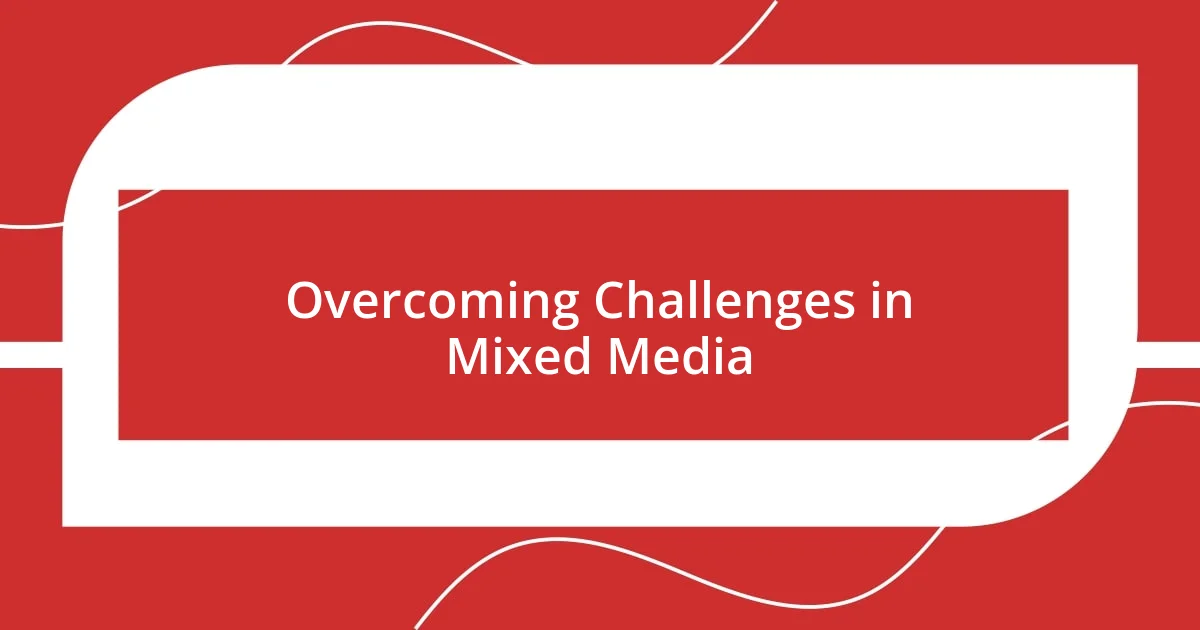
Overcoming Challenges in Mixed Media
One of the most common challenges in teaching mixed media is the intimidation factor some students feel. I recall a student who hesitated to mix oil pastels with acrylics, fearing that combining them might ruin her work. I reassured her that art is about exploration and making mistakes—after all, many great ideas come from unexpected outcomes! Watching her face light up as she embraced the messiness of mixing these mediums was a reminder of the transformative power of stepping outside one’s comfort zone. Have you ever had that moment when you let go of perfection and found joy in the process?
Another hurdle is the overwhelming choice of materials available, which can sometimes paralyze creativity. I remember setting up a mixed media station filled with every kind of paper, fabric, and medium imaginable. Initially, one student struggled to choose what to use. I encouraged her to start with a few items that spoke to her rather than trying to tackle everything at once. With just a couple of felt-tips and scraps of paper, she began layering—and soon, she was in the zone, unraveling her narrative piece by piece. It’s fascinating how limiting choices can paradoxically spark more creativity by helping students focus.
Time management can also be tricky in mixed media projects, as they often require layering and drying time, which can disrupt workflow. I’ve learned that breaking down the projects into manageable phases keeps students engaged without feeling rushed. By encouraging them to strategize their approach, we can celebrate small milestones together. Recently, when a student completed a series of small pieces instead of one large one, it was thrilling to see her relish each completed work. This not only alleviated stress but allowed her to reflect on her progress, fostering a sense of accomplishment along the way. How do you organize your time when tackling a creative project?
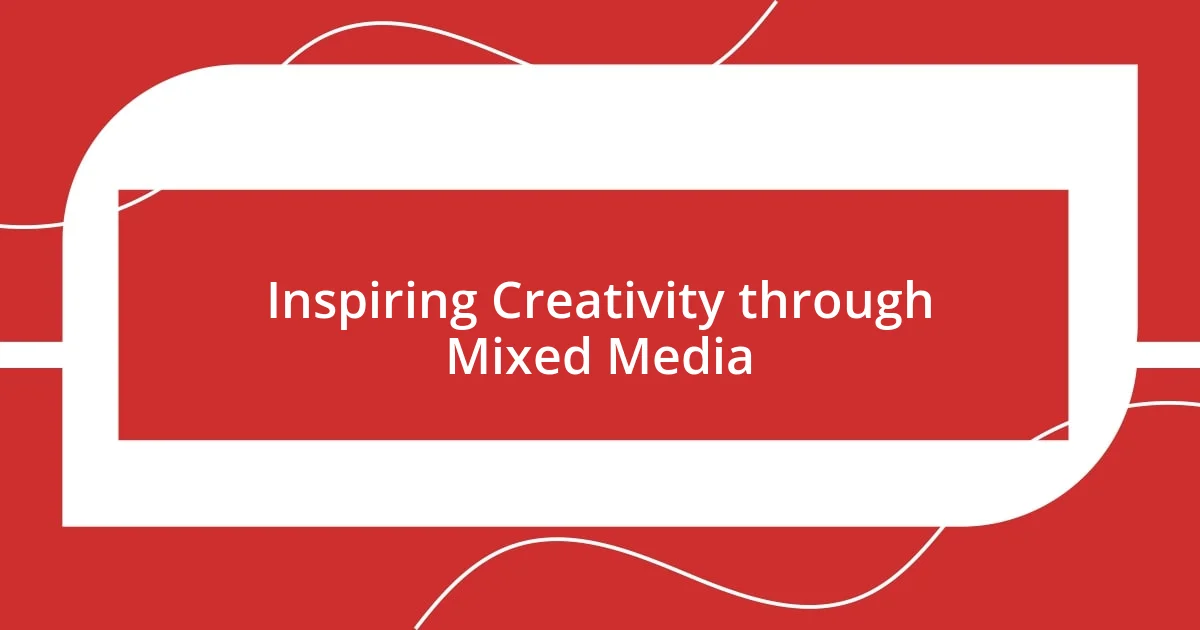
Inspiring Creativity through Mixed Media
Mixed media art has this incredible ability to inspire creativity by allowing artists to break free from traditional boundaries. I often tell my students that there are no rules in creativity; it’s all about exploration. One time, a student found an old map at a thrift store. She decided to use it as a base for her project, incorporating paint, fabric, and even some tiny trinkets she had collected. The result was a stunning piece that told a personal story of adventure and discovery. It’s amazing how mixing materials can lead to such profound expressions. Have you ever stumbled upon a material that sparked a creative idea for you?
Engaging with various mediums truly fuels the imagination. I remember leading a class where everyone had to pick an unfamiliar medium to work with. One student chose clay for its tactile quality, while another opted for digital photography. When they began to combine these with traditional painting, the room buzzed with excitement. They were inspired to push their boundaries, experimenting with texture, form, and color in ways they hadn’t considered before. It made me reflect: what unique combinations could push our own creative limits?
There’s something deeply fulfilling about watching students realize their artistic voices through mixed media. I find that this approach encourages them to embrace their individuality. In a recent workshop, we focused on personal narratives. One student shared how she used her grandmother’s old jewelry to represent cherished memories in her piece. The emotion she infused into her artwork was palpable; it was more than just a project—it became a testament to her journey. Isn’t it astonishing how mixed media can serve as a bridge between personal experiences and creative expression?










